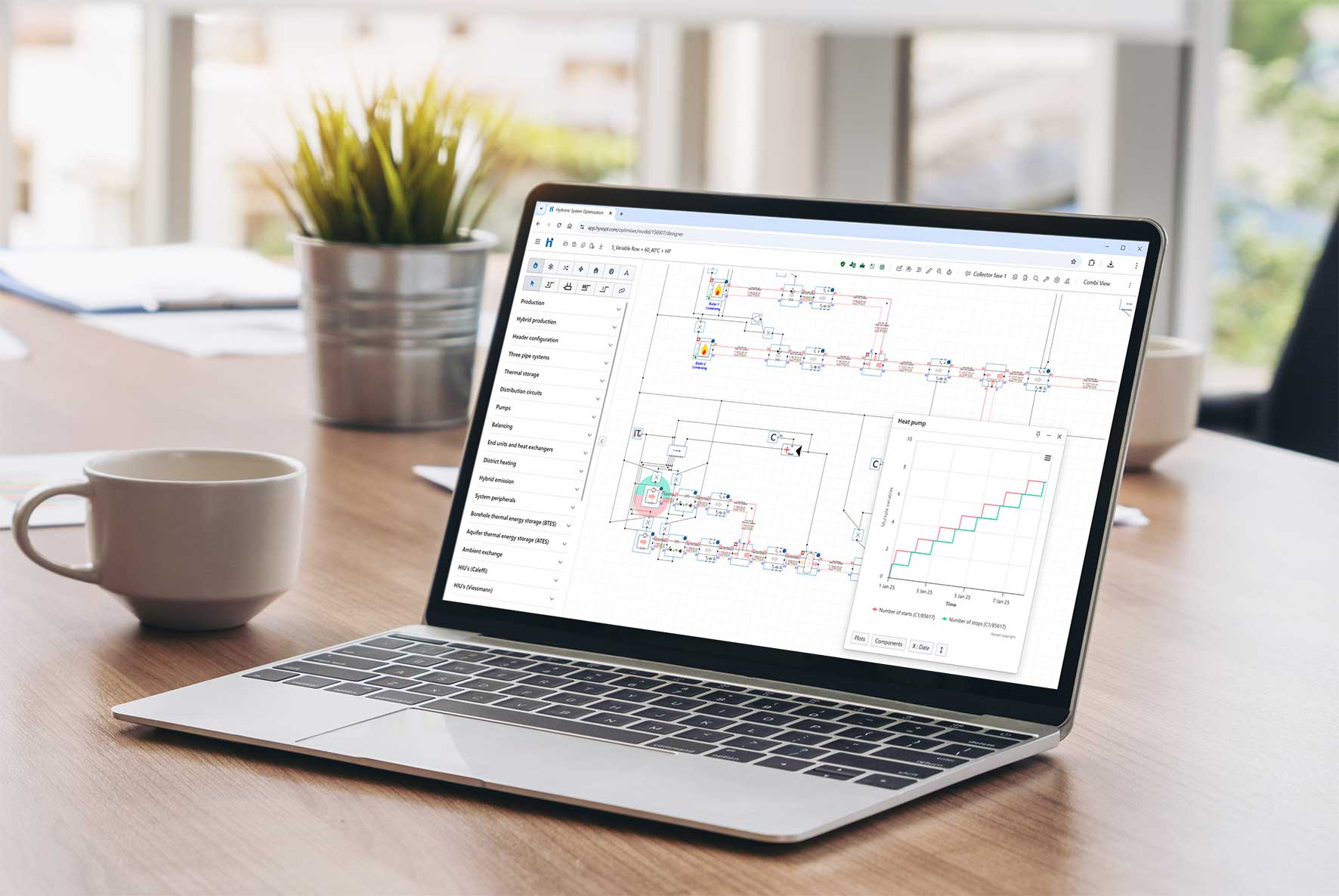The Limits of Experience in Modern HVAC Design
Engineering experience is invaluable — but today’s HVAC systems are far more complex than they were a decade ago. Variable-flow networks, heat pumps, hybrid systems, low-temperature operation, and strict carbon targets require precision that gut feeling simply can’t deliver.
Even the most seasoned engineer can’t intuitively predict how thousands of interacting variables will behave under changing conditions. Manual methods are excellent for early thinking, but they can’t validate a system’s behaviour across a full operating year.
This is where simulation becomes indispensable. Instead of relying on assumptions, simulation tools show exactly how a design will perform — before you're asked to defend it to clients, contractors, or consultants.
From Assumptions to Verified System Behaviour
Gut feeling may point in the right direction, but simulation confirms the destination. By modelling hydronic behaviour, temperature differentials, pump performance, and control responses, engineers remove ambiguity and replace assumptions with evidence.
When a client asks, “Will this meet my comfort and energy targets?”, you don’t have to make a judgement call — you can prove it.
Simulation allows you to:
- test multiple design options in minutes
- visualise flow and temperature behaviour dynamically
- identify oversizing, bottlenecks, or ΔT issues early
- quantify CO₂ savings, energy use, and lifecycle impact
This level of certainty transforms design conversations from subjective discussions into objective technical decisions.
See how simulation strengthens HVAC engineering decisions ›
Eliminating Hidden Risks That Gut Feeling Misses
Many HVAC performance issues aren’t obvious during design. A pump operating off-curve, a poorly balanced branch, or a small control error can snowball into major on-site problems.
Gut feeling can’t detect these invisible risks — but simulation does.
By stress-testing a system under varying loads, temperatures, and seasonal conditions, engineers see problems before they happen on-site.
This prevents:
- emergency redesigns
- commissioning delays
- performance claims
- uncomfortable spaces and client complaints
In short: simulation is proactive risk management.
Turning Proof Into Trust
Clients don’t want opinions — they want assurance. When your design is backed by transparent, physics-based results, you gain authority in the room.
Simulation makes it easier to defend decisions such as:
- why a component must be sized a certain way
- why a heat pump or plant configuration is selected
- why a flow rate, ΔT, or operating temperature is necessary
- how the system will meet comfort and sustainability targets
Rather than saying “this should work,” you show exactly how it will work.
That clarity builds trust and reduces pushback across the entire design-to-delivery process.
Engineering With Confidence, Not Intuition
Simulation doesn’t replace engineering intuition — it strengthens it.
Experience guides high-level decisions; simulation validates them with data. Together, they create designs that perform as intended, reduce risk, and stand up to scrutiny.
That’s why leading engineering teams rely on simulation to defend HVAC design decisions with data — and outperform those relying on gut feeling alone ›
FAQ: Simulation vs Gut Feeling in HVAC Engineering




